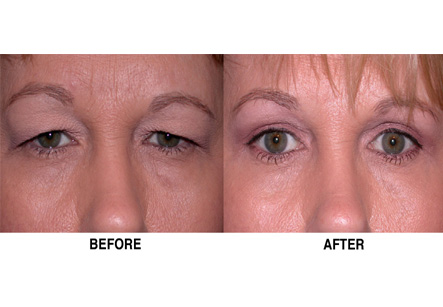Blepharoplasty
Introduction
Blepharoplasty or eyelid lift is a cosmetic surgery performed to reduce the bagginess from lower eyelids and for removal of excess skin from the upper eyelids.
As in case of any cosmetic surgery, the expectations from the procedure should be very clear. Blepharoplasty can improve the appearance of person and also helps in boosting the self-confidence. However, it cannot eliminate under-eye circles, crow’s feet or other facial wrinkles near the eyes. It also cannot change the structure of the face. This procedure is commonly performed in combination with other procedures like
1. Forehead lift
2. Facelift
3. Laser resurfacing
4. Chemical peel
We have all the information you need about public and private clinics and hospitals that provide ENT surgeries in Iran, Islamic Republic Of with the best quality and lowest possible prices

1. Lift of upper eyelid can remove excessive fat accumulations in the lid which gives appearance of puffiness.
2. Extra loose or sagging skin folds can be removed as they sometimes impair vision and also can disturb the normal contour of the upper eyelid.
3. In lower eyelid lift, the excess skin or fine wrinkles are removed from lower lid.
4. Bagginess under the eyes can be treated by blepharoplasty.
5. It can also correct drooping of lower eyelids which tends to expose the white of eyes below the iris.
6. It is performed as a part of surgery for squint and congenital ptosis (drooping of eyelids).
7. As a part of therapy for myasthenia gravis.
Requirements for Eyelid Surgery
1. Good general health
2. Sound metal status
3. Mostly 35 years or older, but rarely young individuals
4. People with realistic expectations
However, it should be decided by the surgeon whether the surgery is suitable for the patient. The expectations, possible results and risks of surgery should be discussed with the surgeon prior to surgery.
Description
1. This surgery is done in operation room of hospital.
2. The surgeon injects a local anesthetic medication around the eye to numb the area of surgery. Anti-anxiety medications are given to the patient.
3. Small incisions are made in the natural folds or creases of eyelids and then the surgeon removes any extra fat and loose skin.
4. The eyelids muscles are made tight and then the wounds are closed with stitches.
After the procedure
1. The patient can go home on the same day of surgery.
2. Before going home, an ointment is applied over the wound and the eyes are covered with a bandage.
3. The eyelids can be sore and tight as the effect of anesthesia wears off. But this can be easily relieved by pain killers. Antibiotic and anti-itching eye drops are prescribed for a few days.
4. Head should be kept raised and high pillow should be taken to sleep for several days. Ice packs can help in reducing the swelling and bruising.
5. Patient can see well in 2 to 3 days and contacts should be worn for about two weeks.
6. Normal activities can be resumed in about 5 days. However, strenuous activities that can raise blood pressure such as lifting, bending and sports should be avoided for at least 3 weeks.
7. Constipation and sneezing should be avoided if possible.
8. Stitches are removed after 2 to 7 days after blepharoplasty. Increased tears, sensitivity to light, temporary visual blurring and double vision are normal for a few weeks.
Results
1. Scars can remain slightly pink in color for 6 months or a year after surgery.
2. The scars fade eventually to a thin, very faint white line.
3. The improved and youthful look usually lasts for years and can be permanent for many people.
Medical conditions that can complicate the blepharoplasty are:
1. Diabetes mellitus
2. Heart disorders
3. High blood pressure
4. Dry eyes or inability to produce enough tears
5. Hypothyroidism or grave’s disease.
Risks
Risks of an eyelid lift include:
1. Swelling of eyelids
2. Slow healing
3. Tiny whiteheads after removal of stitches
4. Uneven healing or scarring
5. Failure of procedure
6. Double or blurred vision
7. Eye damage or loss of vision which is rare.
8. Inability to close the eyelids during sleep.
The risks for any anesthesia like:
1. Breathing problems
2. Reactions to medications
The risks for any surgery like:
1. Infection
2. Bleeding